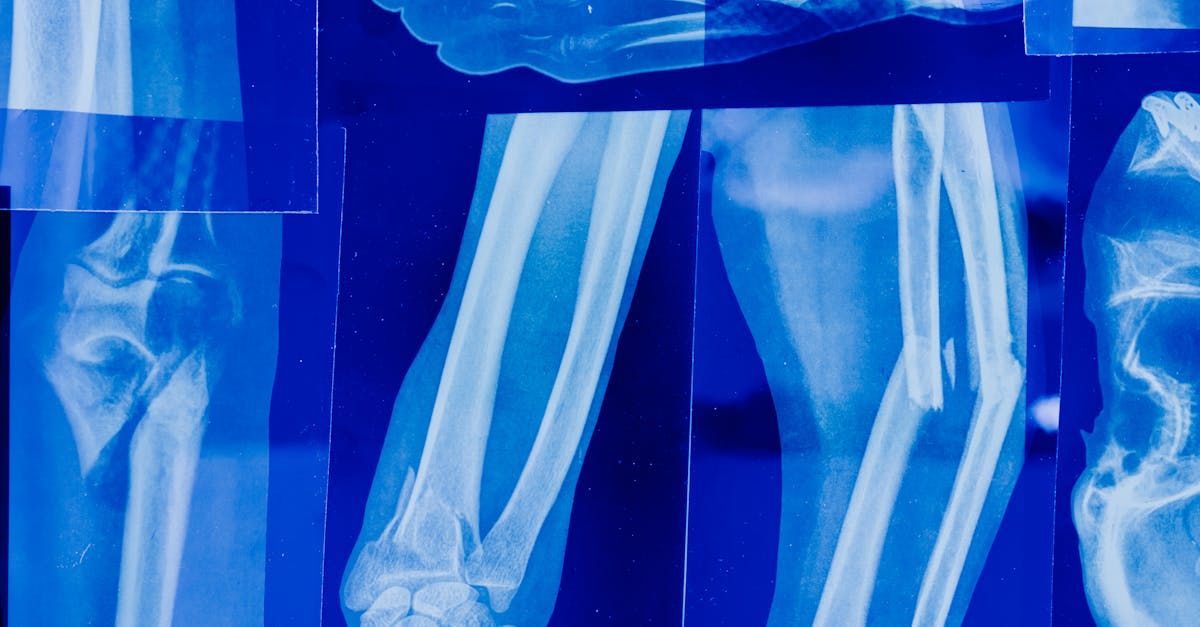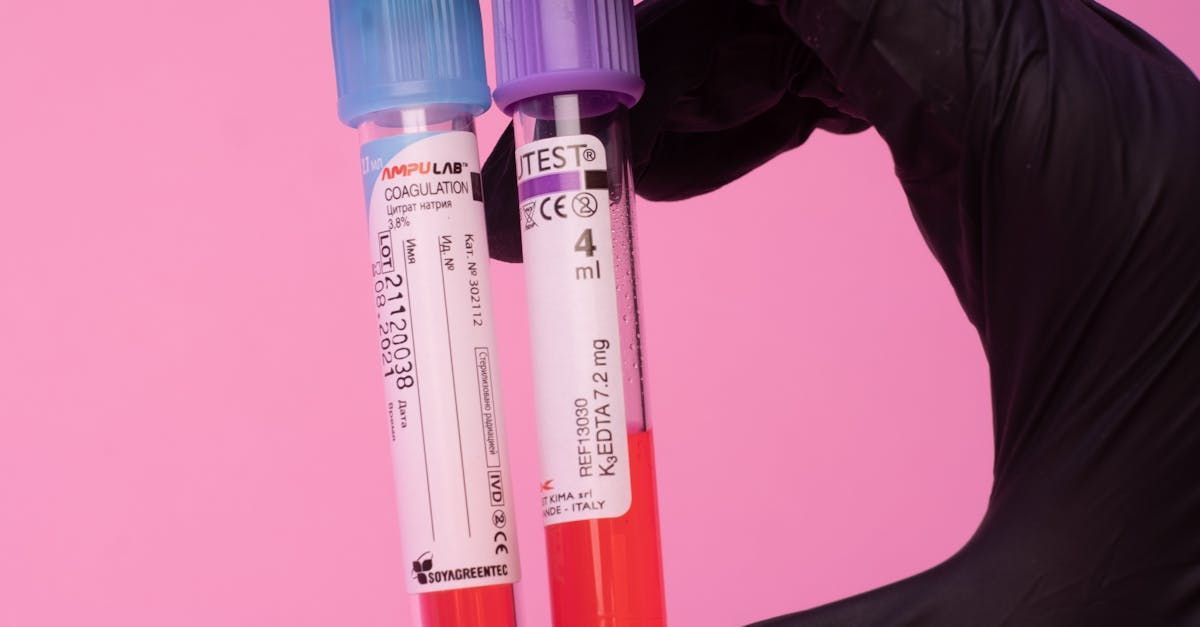Precision Medicine in Rare Diseases: Investment Potential
Precision medicine represents a transformative approach to healthcare, focusing on tailoring medical treatment to the individual characteristics of each patient. This innovative method considers genetic, environmental, and lifestyle factors to develop personalized treatment plans. Unlike traditional one-size-fits-all approaches, precision medicine aims to target the underlying mechanisms of diseases, offering more effective and efficient healthcare solutions.
Rare diseases, often referred to as orphan diseases, affect a small percentage of the population. According to the World Health Organization, a disease is considered rare when it affects fewer than 1 in 2,000 people. Despite their rarity, there are over 7,000 identified rare diseases, collectively impacting millions worldwide. These conditions often have severe, chronic, and progressive courses, leading to significant morbidity and mortality. The limited patient population for each rare disease poses unique challenges for diagnosis, treatment, and research.
Importance of Precision Medicine in Treating Rare Diseases
The treatment of rare diseases presents unique challenges, including limited knowledge of the disease mechanisms, a small number of patients for clinical trials, and a lack of effective treatments. Traditional treatment methods often fail to address the specific needs of rare disease patients, leading to suboptimal outcomes.
Precision medicine offers a promising solution to these challenges by providing tailored treatment options based on a deep understanding of genetic and molecular underpinnings. For rare diseases, where the genetic component is often a significant factor, precision medicine can lead to groundbreaking discoveries and treatments.
By leveraging advanced technologies such as genomic sequencing, researchers can identify specific genetic mutations responsible for rare diseases and develop targeted therapies. This personalized approach not only improves the effectiveness of treatments but also reduces the risk of adverse effects, offering new hope to patients and their families.
In conclusion, the intersection of precision medicine and rare diseases represents a critical area of innovation with significant potential to improve patient outcomes. The growing understanding of genetic and molecular factors driving these diseases, coupled with advances in technology, positions precision medicine as a game-changer in the fight against rare diseases. As we explore the market and investment potential in this field, it becomes evident that there are substantial opportunities for stakeholders willing to invest in this transformative approach to healthcare.
Market Overview
Current Market Size and Growth Projections
The market for precision medicine in rare diseases is rapidly expanding, driven by significant advancements in genomics and biotechnology. As of 2023, the global precision medicine market is valued at approximately $78 billion, with a notable portion dedicated to rare disease applications. This segment is expected to grow at a compound annual growth rate (CAGR) of 11.2% over the next decade, reaching an estimated $178 billion by 2033. The rare diseases sector, in particular, is poised for substantial growth due to the increasing number of identified genetic disorders and the demand for targeted therapies.
Key Market Drivers
Advances in Genomic Research and Technology:
The precision medicine market is being propelled forward by groundbreaking advancements in genomic research and technology. High-throughput sequencing technologies, such as next-generation sequencing (NGS), have drastically reduced the cost and time required to decode the human genome. These advancements have enabled researchers to identify genetic mutations linked to rare diseases with unprecedented accuracy and speed. The ability to pinpoint specific genetic anomalies has paved the way for the development of targeted therapies, making precision medicine an increasingly viable approach for treating rare diseases.
Increased Understanding of Genetic Mutations and Disease Mechanisms:
The growing body of knowledge surrounding genetic mutations and disease mechanisms is another critical driver of the precision medicine market. Scientists are now able to map out complex genetic pathways and understand how specific mutations lead to the manifestation of rare diseases. This deeper understanding allows for the development of highly targeted treatments that address the root cause of diseases rather than just alleviating symptoms. As research continues to uncover the intricacies of genetic disorders, the potential for discovering new therapeutic targets and developing innovative treatments expands significantly.
Growing Patient Advocacy and Awareness:
Patient advocacy groups and increased awareness are playing a crucial role in driving the precision medicine market for rare diseases. These organizations work tirelessly to raise awareness about rare diseases, advocate for research funding, and support patients and their families. Their efforts have led to greater visibility of rare diseases in the public and medical communities, fostering a more robust demand for effective treatments. Additionally, these groups often collaborate with researchers and pharmaceutical companies to ensure that the patient’s voice is heard in the development of new therapies, further emphasizing the need for precision medicine approaches.
Regulatory Support and Incentives:
Regulatory bodies worldwide are recognizing the importance of precision medicine and are providing support and incentives to foster innovation in this field. In the United States, the Orphan Drug Act provides various incentives, including tax credits, grant funding, and market exclusivity, to encourage the development of treatments for rare diseases. Similar initiatives exist in other regions, such as the European Union's Orphan Medicinal Products Regulation. These regulatory frameworks are designed to reduce the financial and administrative burdens associated with bringing new treatments to market, thereby accelerating the development and availability of precision medicine therapies for rare diseases.
Investment Landscape
Major Players and Startups
The precision medicine landscape for rare diseases is populated by a mix of established pharmaceutical companies and innovative startups. Leading companies such as Roche, Novartis, and Pfizer have made significant strides in the field, leveraging their extensive research capabilities and financial resources to develop targeted therapies for rare diseases. These industry giants are often at the forefront of precision medicine, conducting large-scale clinical trials and collaborating with academic institutions to push the boundaries of what is possible.
In addition to these established players, numerous startups are making waves with their innovative approaches and cutting-edge technologies. For example, Bluebird Bio focuses on gene therapy to treat rare genetic disorders, while CRISPR Therapeutics is pioneering the use of CRISPR-Cas9 gene editing technology to correct genetic defects at their source. Another notable startup, Beam Therapeutics, specializes in base editing, a technique that allows for precise modification of individual DNA bases, offering potential cures for a range of rare diseases.
These startups, often born from academic research labs, bring fresh ideas and new technologies to the market, challenging traditional paradigms and driving progress in precision medicine. Their agility and willingness to take risks allow them to explore novel therapeutic approaches that might not be feasible for larger companies with more rigid structures.
Funding and Investment Trends
The precision medicine sector has seen robust investment activity in recent years, with significant funding rounds and major investments from venture capital firms, private equity investors, and strategic partnerships. In 2023, the sector attracted over $15 billion in venture capital funding, with a substantial portion directed towards companies focused on rare diseases. This influx of capital reflects the growing recognition of the investment potential in precision medicine and the high unmet need for effective treatments for rare diseases.
Venture capital firms are particularly active in this space, seeking out early-stage companies with innovative technologies and strong scientific foundations. Firms such as ARCH Venture Partners, Flagship Pioneering, and Third Rock Ventures have been instrumental in funding and supporting some of the most promising startups in precision medicine. Private equity investors are also showing increased interest, often stepping in at later stages to provide the capital needed to scale operations and bring therapies to market.
Additionally, strategic partnerships and collaborations between pharmaceutical companies and biotech startups are becoming more common. These partnerships often provide startups with the resources and expertise needed to advance their research, while allowing larger companies to stay at the cutting edge of innovation without bearing all the risks associated with early-stage development.
Case Studies
Case Study 1: Spark Therapeutics and Luxturna
One of the most notable success stories in precision medicine for rare diseases is Spark Therapeutics' development of Luxturna, a gene therapy for RPE65-mediated inherited retinal dystrophy. Luxturna became the first FDA-approved gene therapy for a genetic disease, offering a potential cure for patients with this rare form of blindness. Spark Therapeutics, initially funded through a combination of venture capital and strategic partnerships, saw significant returns on investment following the FDA approval and subsequent acquisition by Roche for $4.8 billion. This case highlights the potential for high returns in precision medicine investments when groundbreaking therapies reach the market.
Case Study 2: Bluebird Bio and Zynteglo
Another successful example is Bluebird Bio's development of Zynteglo, a gene therapy for transfusion-dependent beta-thalassemia. Bluebird Bio has attracted substantial investment from venture capital firms and strategic partners to advance its gene therapy pipeline. The successful development and commercialization of Zynteglo, coupled with Bluebird's innovative approach to gene therapy, have positioned the company as a leader in precision medicine for rare diseases. Bluebird's strategic focus on developing therapies for severe genetic disorders has resulted in strong investor confidence and significant market valuation.
Case Study 3: Editas Medicine and CRISPR Therapeutics
Editas Medicine and CRISPR Therapeutics are pioneering the use of CRISPR-Cas9 gene editing technology to treat rare genetic disorders. Both companies have secured substantial funding from venture capital firms and formed strategic partnerships with larger pharmaceutical companies to advance their research. Their focus on developing therapies for rare diseases with high unmet medical needs has attracted significant investor interest, resulting in successful funding rounds and robust pipeline development. The collaboration between Editas Medicine and Allergan to develop a CRISPR-based treatment for Leber congenital amaurosis 10, a rare inherited eye disorder, exemplifies the strategic partnerships driving progress in this field.
Case Study 4: Notable Labs and Precision Medicine Patient Selection
In conclusion, the investment landscape for precision medicine in rare diseases is vibrant and full of potential. Major players, innovative startups, and significant funding from venture capital and private equity firms are collectively driving the growth and advancement of this sector. Successful case studies demonstrate the potential for high returns and the transformative impact of precision medicine on patients' lives. For investors, this represents a unique opportunity to contribute to groundbreaking healthcare advancements while achieving substantial financial gains.
Opportunities and Challenges
Opportunities for Investors
Untapped Markets and Niche Areas within Rare Diseases:
One of the most compelling opportunities for investors in the precision medicine sector for rare diseases is the existence of numerous untapped markets and niche areas. While thousands of rare diseases have been identified, only a fraction have effective treatments available. This gap represents a significant opportunity for investors to fund the development of new therapies. Investing in the discovery and development of treatments for lesser-known rare diseases can yield substantial returns, especially as these markets are often underserved and in desperate need of innovative solutions.
Potential for High Returns Due to the High Unmet Need:
The high unmet medical need in the rare disease space presents a potential for high returns on investment. Patients with rare diseases often have limited or no treatment options, creating a strong demand for effective therapies. As a result, companies that successfully develop treatments for rare diseases can command premium pricing and achieve rapid market uptake. Moreover, the Orphan Drug Act and similar legislation in other regions provide financial incentives, such as tax credits and market exclusivity, further enhancing the profitability of investments in this area.
Partnerships with Academic Institutions and Research Organizations:
Partnerships with academic institutions and research organizations offer another promising avenue for investors. Academic institutions are often at the forefront of cutting-edge research and possess a wealth of knowledge and expertise in rare diseases. By collaborating with these institutions, investors can gain access to novel discoveries and early-stage research, potentially leading to the development of groundbreaking therapies. These partnerships can also reduce the financial burden of research and development (R&D) by leveraging the resources and infrastructure of academic institutions.
Challenges and Risks
High R&D Costs and Long Development Timelines:
One of the primary challenges in the precision medicine sector for rare diseases is the high cost of R&D. Developing targeted therapies requires significant investment in advanced technologies and extensive research. Additionally, the development timelines for precision medicine can be long, often spanning several years from initial discovery to clinical trials and regulatory approval. These factors can result in substantial financial outlays before any return on investment is realized, making it essential for investors to have a long-term perspective and patience.
Regulatory Hurdles and Approval Processes:
Navigating the regulatory landscape is another significant challenge. The approval processes for new therapies, particularly for rare diseases, can be complex and stringent. Regulatory agencies such as the FDA and EMA require comprehensive data on the safety and efficacy of new treatments, which necessitates rigorous and costly clinical trials. The uncertainty associated with obtaining regulatory approval can pose a risk for investors, as any delays or setbacks in the approval process can impact the financial viability of an investment.
Market Access and Reimbursement Challenges:
Even after regulatory approval, gaining market access and securing reimbursement can be challenging. Payers and insurers often require evidence of the cost-effectiveness and clinical benefit of new therapies before agreeing to cover them. For rare diseases, where patient populations are small and treatment costs are typically high, demonstrating value can be particularly difficult. Additionally, the variability in reimbursement policies across different regions can complicate the market entry strategy for new therapies, posing further risks for investors.
In summary, while the precision medicine sector for rare diseases offers substantial opportunities for investors, it is not without its challenges. The potential for high returns, driven by the significant unmet need and the availability of financial incentives, makes this an attractive investment area. However, investors must also be mindful of the high R&D costs, lengthy development timelines, regulatory complexities, and market access hurdles. By carefully navigating these challenges and leveraging strategic partnerships, investors can play a pivotal role in advancing precision medicine and improving the lives of patients with rare diseases.
Future Directions
Innovations and Technological Advances
Emerging Technologies and Their Potential Impact on Precision Medicine:
The future of precision medicine in rare diseases is being shaped by several emerging technologies that promise to revolutionize how we diagnose, treat, and manage these conditions. One such technology is gene editing, particularly CRISPR-Cas9, which allows for precise modifications of the genome. This technology holds the potential to correct genetic mutations at their source, offering curative treatments for many rare genetic disorders. Another promising development is in the field of gene therapy, where advancements in vector design and delivery methods are making it possible to replace defective genes with functional ones.
Additionally, next-generation sequencing (NGS) continues to evolve, becoming faster, cheaper, and more accurate. This technology enables comprehensive genomic profiling, which can identify disease-causing mutations and guide the development of targeted therapies. The integration of multi-omics approaches, combining genomics, proteomics, and metabolomics, is also emerging as a powerful tool to gain a holistic understanding of disease mechanisms and identify novel therapeutic targets.
Role of AI and Machine Learning in Advancing Research and Treatment:
Artificial intelligence (AI) and machine learning (ML) are playing increasingly critical roles in advancing precision medicine. These technologies can analyze vast amounts of biomedical data to uncover patterns and insights that would be impossible for humans to discern. In the context of rare diseases, AI and ML can accelerate drug discovery by predicting the efficacy of compounds, identifying potential side effects, and optimizing clinical trial designs. Machine learning algorithms are also being used to develop predictive models that can identify patients at risk of developing certain conditions, enabling earlier and more precise interventions.
Furthermore, AI-driven analytics can facilitate the integration and interpretation of diverse data sources, such as electronic health records, genomic data, and real-world evidence, to provide personalized treatment recommendations. This not only enhances the accuracy and effectiveness of treatments but also improves patient outcomes by ensuring that therapies are tailored to the unique genetic and clinical profiles of individual patients.
Regulatory and Policy Developments
Expected Changes in Regulatory Policies:
Regulatory policies are evolving to keep pace with the rapid advancements in precision medicine. One anticipated change is the adoption of more flexible and adaptive regulatory frameworks that can accommodate the unique challenges of developing treatments for rare diseases. For example, regulatory agencies may implement accelerated approval pathways and adaptive trial designs that allow for faster and more efficient evaluation of new therapies. These changes are expected to reduce the time and cost associated with bringing new treatments to market, benefiting both patients and investors.
In addition, there is a growing emphasis on the use of real-world evidence (RWE) in regulatory decision-making. RWE, derived from sources such as electronic health records and patient registries, can provide valuable insights into the safety and efficacy of treatments in real-world settings. Incorporating RWE into regulatory processes can enhance the evaluation of new therapies, particularly for rare diseases where traditional clinical trials may be challenging to conduct.
How These Developments May Influence the Market:
The expected regulatory changes are likely to have a significant positive impact on the market for precision medicine in rare diseases. Streamlined approval processes and adaptive trial designs can reduce development timelines and costs, making it more attractive for investors to fund innovative therapies. The incorporation of real-world evidence can also provide stronger support for the approval and reimbursement of new treatments, facilitating their entry into the market.
These regulatory advancements will likely stimulate increased investment in the precision medicine sector, as the reduced risks and costs associated with development can enhance the return on investment. Furthermore, the ability to bring new therapies to market more quickly can improve patient access to life-saving treatments, driving demand and market growth.
Collaboration and Partnerships
Importance of Collaboration Between Biotech Firms, Pharmaceutical Companies, and Research Institutions:
Collaboration is a cornerstone of progress in precision medicine for rare diseases. The complexity and high costs associated with developing targeted therapies necessitate partnerships between biotech firms, pharmaceutical companies, and research institutions. These collaborations leverage the strengths of each partner, combining the innovative approaches of biotech startups with the resources and expertise of large pharmaceutical companies and the cutting-edge research conducted at academic institutions.
Collaborative efforts can accelerate the translation of scientific discoveries into clinical applications, enhance the efficiency of drug development, and improve the chances of regulatory approval. Partnerships also provide access to a broader range of funding sources, infrastructure, and technological capabilities, which are crucial for advancing precision medicine.
Examples of Successful Partnerships and Their Benefits:
One notable example of successful collaboration is the partnership between CRISPR Therapeutics and Vertex Pharmaceuticals. This collaboration focuses on developing gene-editing therapies for rare genetic diseases, such as sickle cell disease and beta-thalassemia. By combining CRISPR Therapeutics' expertise in gene editing with Vertex's extensive experience in drug development and commercialization, the partnership has achieved significant milestones, including promising clinical trial results and accelerated development timelines.
Another example is the collaboration between the University of Pennsylvania and Spark Therapeutics in the development of Luxturna. The partnership leveraged the university's pioneering research in gene therapy and Spark's capabilities in clinical development and commercialization. This collaboration led to the successful approval and commercialization of the first FDA-approved gene therapy for a genetic disease, setting a precedent for future gene therapy developments.
Summary of Investment Potential
The precision medicine sector for rare diseases presents a compelling investment opportunity, driven by several key factors:
- Rapid Market Growth: The precision medicine market, particularly for rare diseases, is expanding rapidly with significant growth projections. This expansion is fueled by advancements in genomic research, technology, and an increasing understanding of genetic mutations and disease mechanisms.
- High Unmet Medical Need: The substantial unmet need for effective treatments for rare diseases creates a strong demand for precision medicine therapies. Patients with rare diseases often have limited treatment options, making new therapies highly sought after and potentially lucrative.
- Technological Innovations: Emerging technologies such as gene editing, next-generation sequencing, and AI-driven analytics are revolutionizing the field, offering new possibilities for the diagnosis, treatment, and management of rare diseases.
- Regulatory Support and Incentives: Supportive regulatory environments, including accelerated approval pathways and financial incentives, are reducing the barriers to bringing new treatments to market. This regulatory support enhances the attractiveness of investments in precision medicine.
- Collaborative Ecosystem: Partnerships between biotech firms, pharmaceutical companies, and academic institutions are driving innovation and efficiency in drug development. These collaborations provide access to resources, expertise, and infrastructure, essential for advancing precision medicine
.
The long-term outlook for precision medicine in rare diseases is highly promising. As technological advancements continue to unfold and our understanding of genetic diseases deepens, the potential for developing effective, targeted therapies grows. The precision medicine sector is poised for sustained growth, offering substantial returns for investors who are willing to engage with this transformative field.











